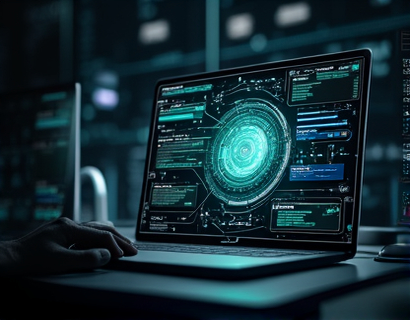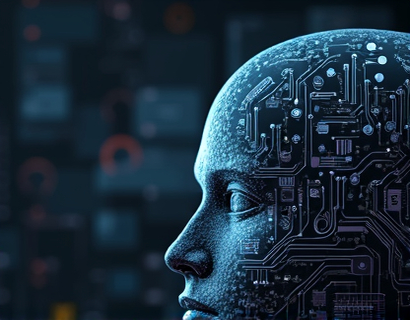Unlocking Next-Gen Productivity: The Synergy of AI and Crypto
The intersection of artificial intelligence and cryptocurrency is giving rise to a new era of digital productivity. This fusion of technologies is not just a trend but a transformative force that is redefining how we manage tasks, enhance efficiency, and innovate in the digital space. As we delve into this topic, it's essential to understand the foundational roles that AI and cryptocurrency play individually and how their combination is unlocking unprecedented levels of productivity.
Understanding AI in Productivity
Artificial intelligence has become an indispensable tool in modern productivity frameworks. AI-driven solutions can automate repetitive tasks, analyze vast amounts of data to provide actionable insights, and even predict future trends. In the context of task management, AI can optimize workflows by identifying bottlenecks, suggesting improvements, and automating routine processes. For instance, AI-powered virtual assistants can handle scheduling, reminders, and even complex decision-making, freeing up human resources for more strategic activities.
The integration of machine learning algorithms into productivity tools has led to the development of smart applications that learn from user behavior and adapt to individual needs. These adaptive systems can prioritize tasks based on urgency and importance, ensuring that users focus on what truly matters. Moreover, AI can enhance collaboration by providing real-time insights and recommendations, fostering a more cohesive and efficient team environment.
Cryptocurrency and Digital Efficiency
Cryptocurrency, on the other hand, brings a unique set of advantages to the table. Beyond its role as a digital currency, cryptocurrency technology, particularly blockchain, offers unparalleled transparency, security, and decentralization. These properties are crucial for enhancing digital efficiency in several ways.
Firstly, blockchain ensures that transactions are immutable and traceable, reducing the risk of fraud and errors. This level of transparency is particularly beneficial in business operations where trust and accountability are paramount. Secondly, the decentralized nature of blockchain eliminates the need for intermediaries, streamlining processes and reducing costs. Smart contracts, self-executing contracts with the terms directly written into code, further automate and secure transactions, reducing the need for manual intervention.
Cryptocurrency also facilitates seamless and instantaneous cross-border transactions, breaking down geographical barriers and enabling global collaboration. This is especially valuable for businesses operating in multiple regions, as it simplifies financial management and enhances operational efficiency.
AI and Crypto: A Powerful Combination
The true potential of AI and cryptocurrency is realized when they are combined. This synergy creates a powerful ecosystem where the strengths of both technologies complement each other, leading to innovative solutions that maximize digital efficiency.
One of the most significant applications of AI in the crypto space is in the realm of trading and investment. AI algorithms can analyze market data, identify patterns, and make predictions with a level of accuracy and speed that surpasses human capabilities. This results in more informed decision-making and potentially higher returns. Additionally, AI can enhance security by detecting and mitigating fraudulent activities in real-time, protecting both individual users and the broader ecosystem.
In the context of productivity, the combination of AI and cryptocurrency can revolutionize how we manage digital assets and resources. For example, AI-driven portfolio management tools can optimize cryptocurrency investments by continuously monitoring market conditions and adjusting portfolios to maximize returns while minimizing risk. This level of automation and intelligence not only saves time but also enhances the overall efficiency of investment strategies.
Enhancing Task Management with AI and Crypto
When applied to task management, the blend of AI and cryptocurrency can create highly efficient and secure systems. AI can optimize task allocation by analyzing user capabilities, workload, and preferences, ensuring that tasks are assigned to the most suitable individuals. This not only improves productivity but also boosts morale by recognizing and leveraging individual strengths.
Cryptocurrency can play a role in incentivizing task completion and performance. By using tokens or cryptocurrencies as a form of digital currency within a platform, users can be rewarded for completing tasks efficiently and effectively. This gamification approach not only motivates users but also creates a transparent and fair system where contributions are directly recognized and rewarded.
Furthermore, the use of smart contracts in task management can automate the entire workflow, from task assignment to completion and payment. This reduces the need for manual oversight and ensures that all parties involved are held accountable. The transparency provided by blockchain ensures that all transactions and task statuses are visible and verifiable, building trust among users.
Case Studies and Real-World Applications
Several projects and platforms are already leveraging the combination of AI and cryptocurrency to enhance productivity and task management. One notable example is a decentralized task management platform that uses AI to optimize task distribution and cryptocurrency tokens to incentivize performance. This platform has seen significant improvements in task completion rates and user satisfaction, demonstrating the practical benefits of this technological fusion.
Another example is an AI-powered financial management tool that integrates with cryptocurrency wallets to provide real-time insights and automated investment strategies. Users can set financial goals, and the AI system suggests optimal investment plans based on market analysis and personal preferences. This not only simplifies financial management but also empowers users to make data-driven decisions.
Future Prospects and Challenges
The future of AI and cryptocurrency in productivity and task management is promising, with numerous potential applications yet to be explored. As technology continues to advance, we can expect more sophisticated AI algorithms and more robust blockchain solutions that further enhance efficiency and security.
However, there are challenges that need to be addressed. One of the primary concerns is the regulatory landscape, as both AI and cryptocurrency are still navigating complex legal frameworks. Ensuring compliance while fostering innovation is a delicate balance that requires collaboration between technologists, policymakers, and industry leaders.
Another challenge is the adoption rate. While the potential benefits are clear, there is still a learning curve associated with these technologies. Education and user-friendly interfaces will be crucial in driving widespread adoption and maximizing the impact of AI and cryptocurrency in productivity solutions.
Conclusion
The convergence of AI and cryptocurrency is paving the way for a new era of digital productivity. By harnessing the power of intelligent algorithms and the security and efficiency of blockchain, we can create systems that not only streamline tasks but also inspire innovation and collaboration. As we continue to explore and develop these technologies, the possibilities for enhancing productivity and redefining efficiency in the modern digital landscape are endless.











































